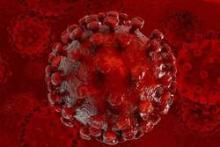An HIV-positive child, who was thought to have been cured of the virus after receiving intensive antiretroviral treatment for 3 years starting at birth, exhibited detectable signs of HIV infection just 2 weeks after termination of treatment.
The child, born to an HIV-positive mother from whom the infection was contracted, is the second reported instance of apparent HIV remission in a child after receiving early antiretroviral treatment (ART) at birth, following the case of the Mississippi infant. In both cases, intense ART was administered to the babies for prolonged periods of time beginning at birth, and traces of HIV were no longer evident in blood samples, only for the virus to return later.
“The so-called Mississippi child was believed to be cured thanks to early initiation of ART [which] raised the possibility of achieving a cure without procedures such as bone marrow transplant with CCR5-delta 32 cells,” according to a case report penned by Dr. Vania Giacomet and associates at the Luigi Sacco Hospital in Milan, Italy, where the most recent child was treated. “However, recent evidence of viral rebound in the Mississippi child shattered this hope.”
According to the case report published by The Lancet (Lancet 2014;384:1320), the latest child was born to an HIV-positive mother, who went into labor in December 2009 after 41 weeks’ gestation. HIV 1-2 antibody western blot and HIV-1 antigen p24 were positive in the newborn, who also had an HIV-RNA viral load of 152,560 copies per mL.
The infant was placed on a regimen of prophylaxis with zidovudine and nevirapine within 12 hours of birth, resulting in a viral load of 13,530 copies per mL after 4 days. Doctors then began a triple ART with ritonavir-boosted lopinavir, zidovudine, and lamivudine, which drastically decreased the infant’s viral load to 3,971 copies per mL at day 15, 49 copies per mL after 3 months, and “below assay detection” just 6 months after birth.
Doctors continued administering ART to the child for 3 years, reporting that the viral load remained undetectable and that CD4 T-cell counts were higher than usual. Furthermore, HIV antibodies also had vanished from the infant’s blood work, indicating that the infant was no longer seropositive. With the permission of the child’s mother, doctors terminated the treatment.
Two weeks after treatment ended, however, HIV tests on the child’s blood work came back positive, indicating that viral remission was no longer occurring. Because of this, doctors concluded that the ART was not sufficient to eliminate viral reservoirs within the child, thus allowing the disease to reemerge.
“The availability of many classes of potent antiretroviral drugs has substantially decreased HIV morbidity and mortality, but these drugs cannot eradicate the virus because they do not eliminate viral reservoirs,” the investigators said.
The case report also says that the infant’s in utero infection, low birth weight, and unusually high viral load likely “precluded long-lasting viral remission.” The authors note that the child’s case was not identical to that of the infant in Mississippi, namely because the Italian child’s immune system continued to show signs of responding to HIV infection even when viral load was undetectable; the Mississippi infant’s immune system did not.
No financial disclosures were reported.


